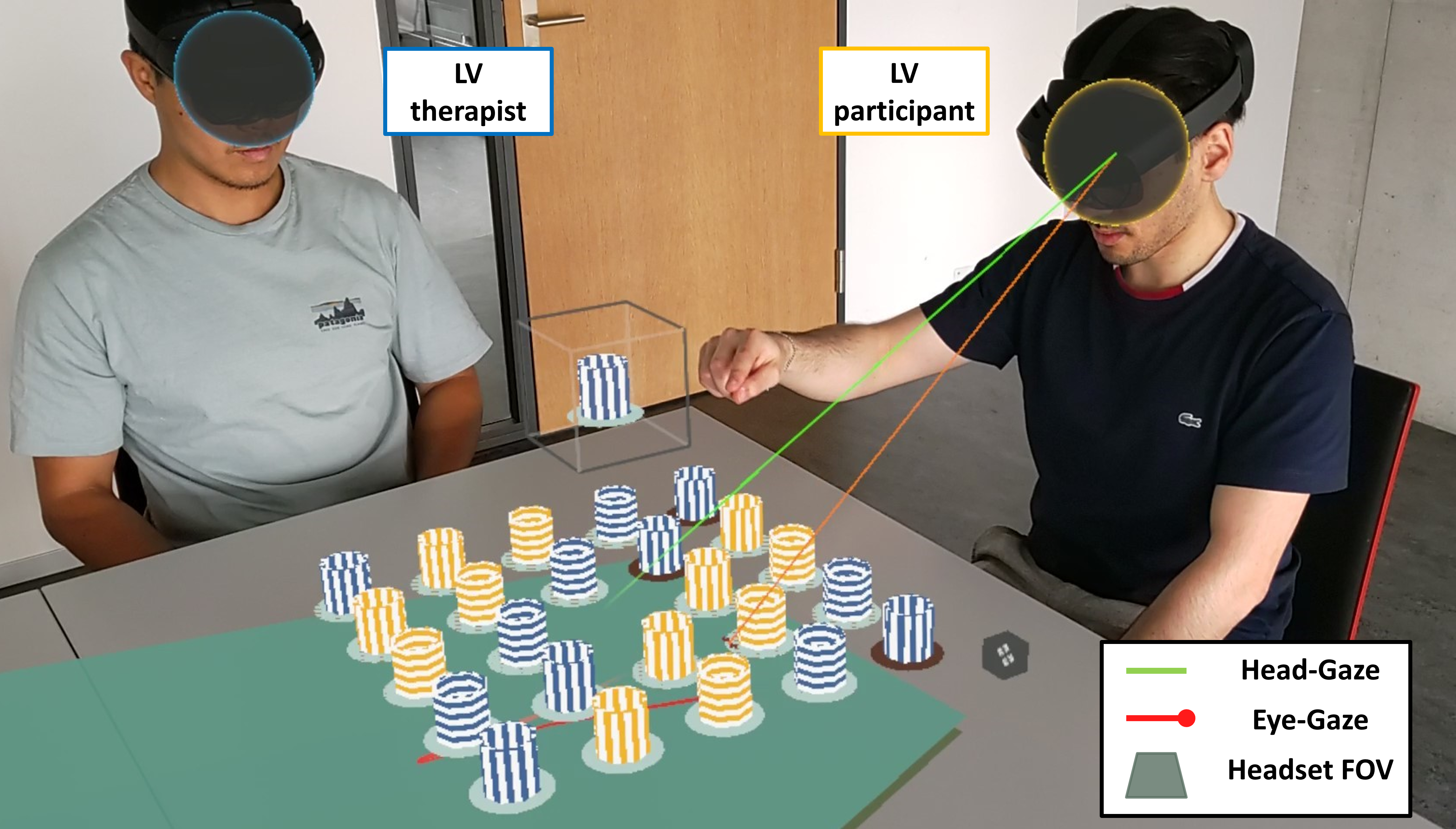Co-Located Shared Augmented Reality for Personalized Low-Vision Training
Loss of visual function significantly affects the ability to perform daily activities independently. This project explores a novel approach to low-vision rehabilitation through the development of a shared augmented reality (S-AR) system. In this system, both the low-vision client and therapist wear head-mounted displays, allowing for real-time observation, guidance, and interaction. The project aims to simulate everyday training tasks in a safe and adaptable environment, supporting individuals in making better use of their residual vision. Conducted in close collaboration with vision rehabilitation centers, this interdisciplinary initiative combines human-computer interaction, clinical insights, and spatial computing to reimagine how visual strategies are trained and supported in practice.

This project is a collaboration between the Departments of Computer Science (Prof. Denis Lalanne), Special Education (Prof. Nicolas Ruffieux), and Psychology (Prof. Roberto Caldara), of the University of Fribourg. The recruitment of patients is in collaboration with the Swiss Federation of the Blind and Visually Impaired, as well as with the Neurorehabilitation and Neurology units of the Fribourg Hospital, and the Neuro-Ophthalmology unit of the Jules-Gonin Eye Hospital.